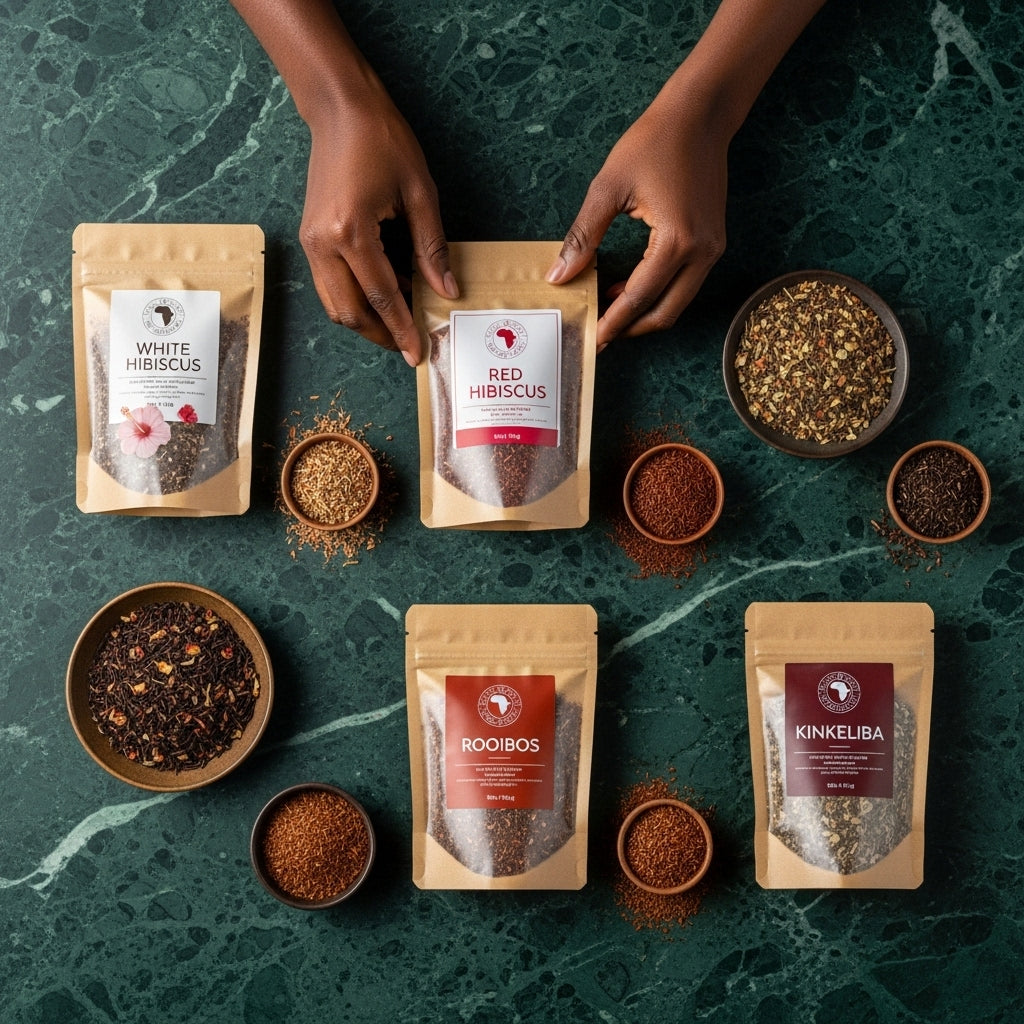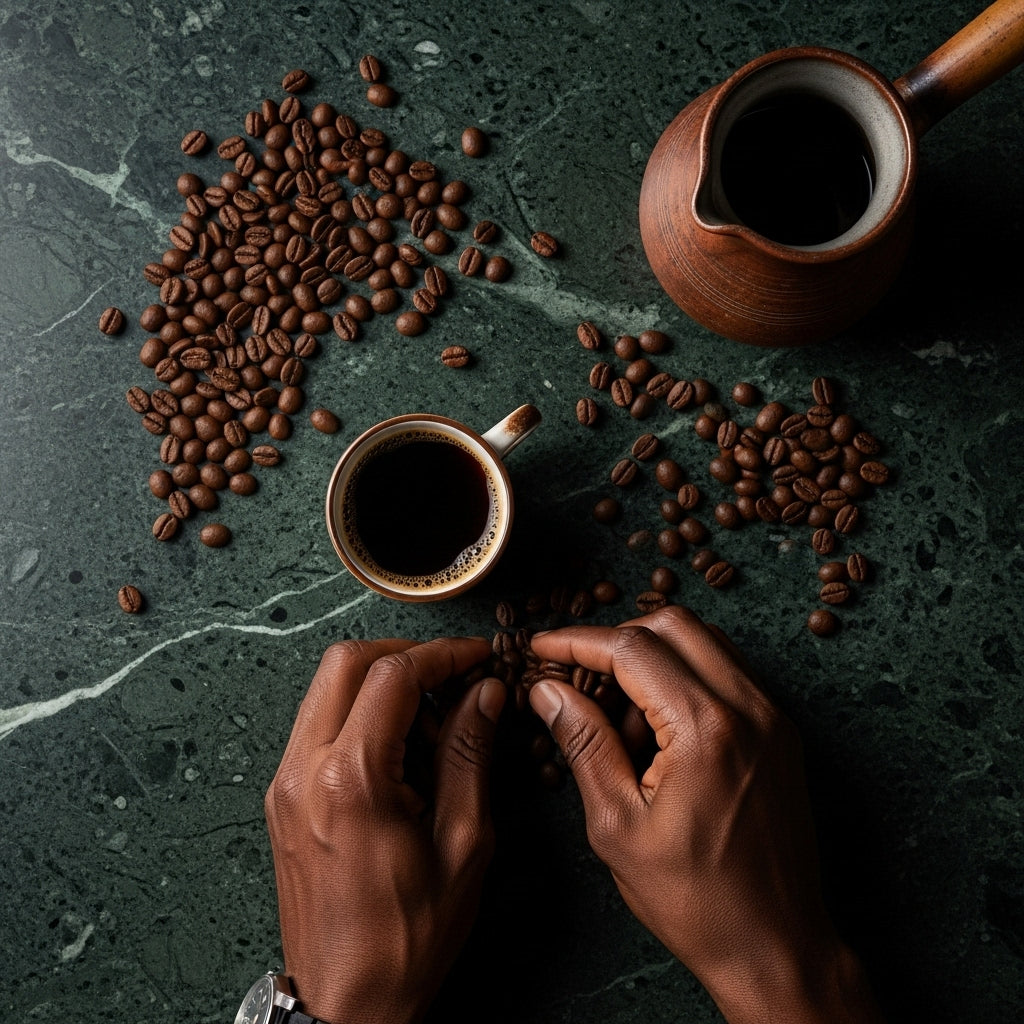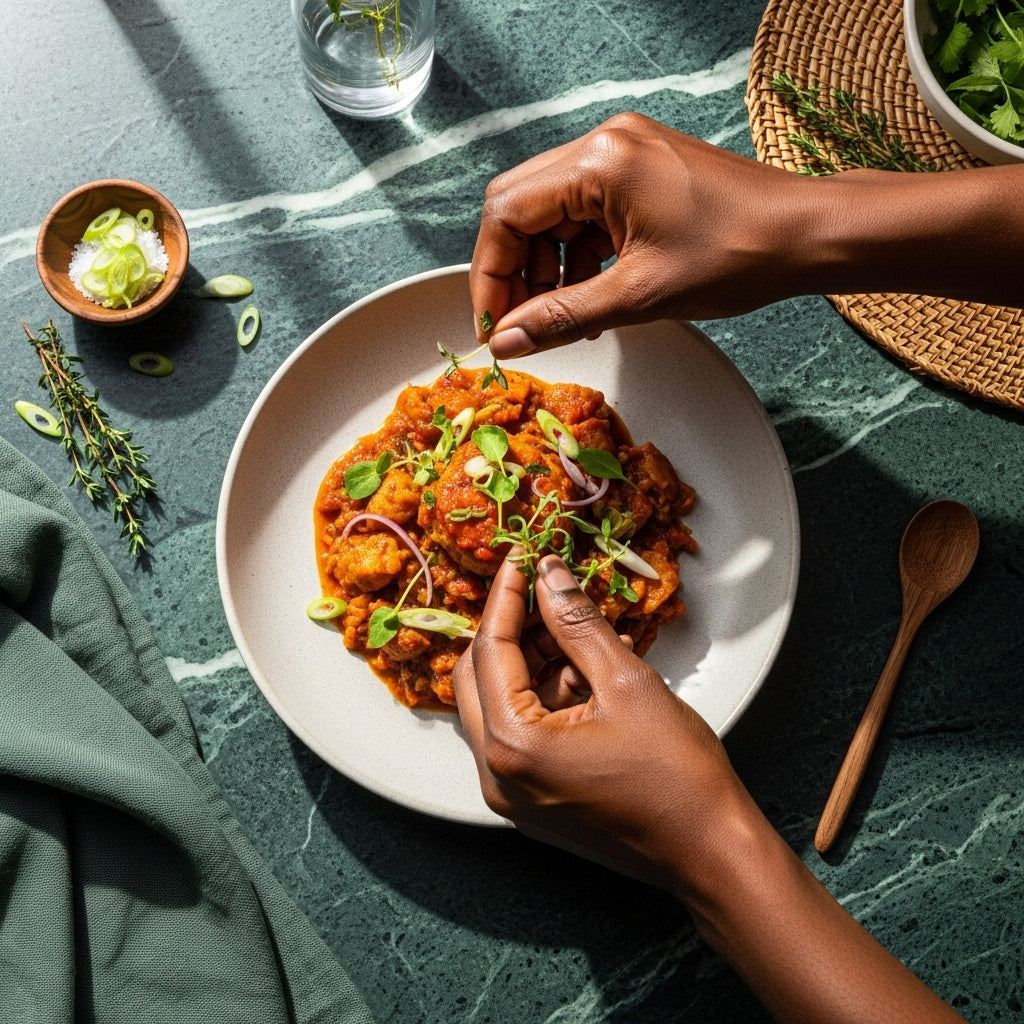
What is pondu: discovering an emblematic Congolese dish
A traditional dish rich in flavors
THE laid is a traditional Congolese dish, primarily made from cassava leaves. This iconic dish is prepared with a blend of spices and various ingredients. Each region of the Democratic Republic of Congo adds its own unique touch, so pondu can vary from family to family. Cassava leaves are often paired with vegetables like onions, peppers, and eggplant, creating a rich and complex blend of flavors.
Culinary diversity and ingredients
THE laid reflects the culinary diversity of the DRC. It can be prepared with different types of protein, including fish or meat. Sardines and other types of fish are an integral part of some recipes, while others favor meat. Added spices, such as chili or ginger, enhance the flavor of the dish. This diversity of ingredients makes pondu a fascinating dish that adapts to everyone's tastes.
A must-have for festive meals
Usually served as a side dish, the laid is a staple of festive meals in the Democratic Republic of Congo. Its creamy texture and unique taste appeal to many African cuisine lovers. Not only laid It is nutritious, but it also establishes a strong cultural connection within Congolese communities. During celebrations, its presence on the table is often a symbol of hospitality and sharing.
The origins of pondu: history and culinary traditions of the DRC
A traditional dish with deep roots
THE laid is a traditional dish from the Democratic Republic of Congo. It has its origins in ancestral culinary practices, developed over the centuries by the different communities that populate the country. This dish is mainly made from cassava leaves, an ingredient widely cultivated and consumed in Central Africa. The preparation techniques have been passed down from generation to generation, making the laid a symbol of Congolese culinary heritage.
A festive and family dish
THE laid is often prepared during celebrations and family gatherings. Whether for weddings, end-of-year celebrations or traditional ceremonies, this dish occupies a special place on the tables. Its preparation often involves the participation of several family members, thus strengthening intergenerational bonds and conviviality. In each region, there are variations of the laid, which testifies to the richness and cultural diversity of the DRC.
Support and sharing
To enrich its taste, the laid is often accompanied by a sauce, such as moambe, which adds delicious flavors. This dish symbolizes not only Congolese gastronomy, but also essential values such as conviviality and sharing. Congolese people gather around this dish, creating moments of joy and brotherhood. Thus, the laid represents much more than just a meal, but a real social bond within communities.
Essential ingredients of pondu: cassava leaves and local vegetables
Cassava leaves: the basis of the pondu
Cassava leaves are a central ingredient in the preparation of laidRich in nutrients, they provide a good amount of protein and vitamins. In addition to their nutritional value, these leaves give a unique texture to the dish. Preparing the leaves requires a good rinse to remove the bitterness, but once cooked, they blend perfectly with the other ingredients.
The importance of local vegetables
In addition to cassava leaves, local vegetables such as sorrel, eggplant and peppers play a crucial role in the laid. These vegetables not only add flavor, but also a variety of textures that enrich the dish. Using seasonal vegetables ensures that the laid remains authentic and faithful to culinary traditions. The vegetable varieties chosen may vary from one region to another, reflecting the cultural diversity of Africa.
A nourishing and tasty dish
The combination of cassava leaves and local vegetables creates a dish that is both nourishing and flavorful. Each bite is an explosion of flavor, where the vegetables blend harmoniously with the leaves. This recipe is a beautiful example of how fresh produce enhances the authenticity of the dish. laidRecipes can vary by region, incorporating vegetables typical of each culture, making it a truly unique dish each time it is prepared.
Preparing the pondu: basic techniques and chef's tips
Choice of ingredients
To prepare a laid To make your dish tasty, it is essential to choose your ingredients carefully. Opt for fresh and tender cassava leaves. These leaves will add a better flavor to your dish. Also, make sure you have a variety of vegetables such as eggplant, peppers, and onions, which will enrich the taste and texture of the dish. laid. As a supplement, you can add sardines for a protein boost.
Blanching and cooking
A key technique in preparing the laid is the blanching of cassava leaves. Blanch them in boiling water for a few minutes before chopping them. This helps reduce the bitterness and preserve their bright color. Then, move on to slow cooking. Let the laid over low heat to allow the flavors to fully develop. This method also ensures that all ingredients cook evenly.
Adding seasonings
To enhance the taste of the laid, don't hesitate to incorporate seasonings. Spices like chili and garlic are excellent choices. They will add a spicy and savory note to your dish. Finally, the laid Pairs perfectly with various side dishes. Serve it with rice, fufu, or fish for a balanced and flavorful meal. This combination will offer you a rich and varied culinary experience.
Regional variations of pondu: recipes across Central Africa
Variations in the Democratic Republic of Congo
THE laid, in the Democratic Republic of Congo, is a must-have dish that stands out for its varied accompaniments. It is often served with braised fish or meat in sauce. This blend of flavors creates a rich culinary experience. The Congolese also prepare laid with ingredients such as spinach and cassava leaves, bringing a touch of freshness to the dish.
Additions in Gabon
In Gabon, the laid takes on another dimension. Gabonese chefs often incorporate local vegetables such as cassava or sweet potato leaves. These elements not only add varied textures, but also distinct flavors that honor local traditions. Gabonese cuisine values fresh produce, and pondu becomes a perfect example, emblematic of this culinary richness.
Flavors in the Republic of Congo
The Republic of Congo, for its part, offers a unique version of the laid with the addition of okra sauce. This choice considerably enhances the flavor of the dish. Okra sauce, with its viscous texture, harmonizes with the laid, offering a complementarity of tastes. Thus, each country of Central Africa contributes to the culinary diversity of laid, enriching its history and popularity across the continent.
Pondu in Congolese culture: meaning and special occasions
A Tradition of Hospitality
THE laid is a traditional Congolese dish that embodies hospitality and conviviality. In Congolese culture, serving laid Serving pondu to guests is a meaningful gesture. It demonstrates a desire to share and bring people together. This dish is often eaten at large celebrations such as weddings, parties, and other milestones. At these times, pondu becomes a symbol of unity, strengthening the bonds between families and friends.
A Dish of Culinary Richness
Accompanied by fish or meat, the laid highlights the country's culinary richness. Ingredients such as cassava leaves, onions, and tomatoes are essential for its preparation. This mixture creates a unique taste experience, appreciated by many. During rituals and ceremonies, the laid takes center stage, reinforcing its cultural significance. It is often featured on tables at these events, demonstrating the importance of food in Congolese traditions.
Transmission of Traditions
The preparation of the laid is also a time for intergenerational sharing. Families often come together to cook together, passing on recipes and advice to younger generations. This process of culinary creation becomes a lesson in cultural values. Outside of festive occasions, the laid remains an everyday staple. Appreciated for its simplicity and taste, it is an integral part of the Congolese diet. Its presence in daily meals is a reminder of the importance of this dish in everyday life.
Nutritional benefits of pondu: a dish rich in vitamins and minerals
A source of essential vitamins
THE laid is a dish rich in vitamins from the vegetables used. Ingredients like spinach, eggplant, and peppers offer a variety of nutrients. These vegetables are loaded with vitamins A, C, and K. Vitamin A is crucial for eye health, while vitamin C strengthens the immune system. Vitamin K plays an important role in blood clotting and bone health.
Minerals and fiber for a balanced diet
In addition to vitamins, the laid Provides essential minerals such as calcium, potassium, and iron. Calcium is important for healthy bones and teeth, potassium helps regulate blood pressure, and iron is essential for red blood cell production. The fiber in vegetables improves digestion and promotes satiety, which can help maintain a healthy weight.
A versatile and nutritious dish
THE laid can be prepared in a variety of ways, allowing for even more nutrients to be added. For example, adding sardines to the recipe increases the omega-3 content, which is beneficial for heart health. Its frequent association with rice helps supplement the intake of complex carbohydrates, thus providing a sustainable source of energy. By incorporating the laid In your diet, you benefit from a tasty and nutritious dish, reflecting the richness of African gastronomy.
Where to find the ingredients for pondu: nkosiagro.com
Essential ingredients for laying
To prepare a delicious laid, gathering the right ingredients is essential. Vegetables such as onions, peppers, eggplant, and zucchini are essential. In addition to vegetables, you'll need ground cassava, sardines, and red palm oil. These ingredients bring the authentic flavors of the Congolese dish. You can find all these ingredients in our online store. nkosiagro.com!
Traditional accompaniments to pondu: fufu with white rice
Fufu: a classic side dish
Fufu is a traditional and essential side dish for laid. It is made from cassava or yam, which gives it a doughy and elastic consistency. This side dish goes perfectly with laid, allowing you to better appreciate the rich flavors of the latter. Fufu is often shaped into balls and eaten by dipping it in pondu, thus adding a unique texture to the meal.
White rice: a tasty alternative
White rice is another popular option to accompany the laid. Light and fluffy, it helps balance the flavors of the main course while providing a pleasant simplicity. White rice can be seasoned with a touch of olive oil or butter to give it an even more pleasant taste. This alternative is often chosen for its ability to absorb sauces and juices from the laid, guaranteeing a satisfying taste experience.
Toppings and sauces to enhance the meal
To complete this feast, sautéed vegetables are often used as a garnish. They add a touch of color, nutrition, and crunch to the dish. Vegetables like peppers, zucchini, and eggplant pair well with the laid. In addition, spicy sauces, such as tomato sauce or peanut sauce, enhance the flavors of the laid and add an extra dimension to the meal. For a sweet note, fried plantains are an excellent choice. Their crispy texture and sweetness contrast pleasantly with the savory taste of the laid.
The modern pondu: contemporary adaptations and culinary fusion
Integration of various ingredients
THE laid Modern cuisine adapts to new culinary trends by incorporating a variety of ingredients. For example, quinoa sometimes replaces cassava, offering a healthy, protein-rich alternative. Chefs also use seasonal, local vegetables to enhance flavors while supporting local agriculture. This evolution makes the laid accessible to a wider audience, while preserving its authenticity.
Innovative cooking techniques
Contemporary chefs are exploring innovative cooking techniques that combine tradition and modernity. They experiment with methods like sous vide and steaming to preserve nutrients while revealing unique textures. These techniques achieve a creamy consistency while respecting the traditional flavors of the laidThe fusion of old and new culinary practices enriches the gastronomic experience.
Variations and culinary workshops
The variants of the laid are multiplying, offering vegetarian and vegan options. Fusion recipes are emerging, combining pondu with influences from other regions of the world, such as laid with Indian spices or the laid Mediterranean with olives and sundried tomatoes. In addition, culinary workshops are developing to teach these adaptations to new generations, ensuring the transmission of this iconic dish while adapting it to contemporary tastes.
What is pondu?
THE laid is a traditional Congolese dish made mainly from cassava leaves, prepared with a mixture of spices and various ingredients.
What ingredients are used in the pondu?
THE laid It is mainly made from cassava leaves, along with vegetables such as onions, peppers, and eggplant. It can also include different proteins such as fish or meat.
Why is pondu important during festive meals?
THE laid is a staple of festive meals in the DRC, symbolizing hospitality and sharing. Its creamy texture and unique taste appeal to many African cuisine lovers.
How does pondu reflect the culinary diversity of the DRC?
Each region of the DRC adds its personal touch to the laid, which makes it unique in each preparation. The variations in ingredients and spices reflect the culinary richness of the country.
What vegetables are often used in pondu?
In addition to cassava leaves, local vegetables such as sorrel, eggplant, and peppers are often used, which add flavor and varied textures to the dish.
How to prepare cassava leaves for laying?
Cassava leaves should be rinsed well and blanched in boiling water to remove the bitterness before being chopped and slowly cooked.
What side dishes go well with pondu?
THE laid It goes well with rice, fufu, or fish, and can be enhanced with sauces like moambe to enrich its taste.
How is pondu perceived in Congolese culture?
Serve some laid to guests is a meaningful gesture that shows a desire to share and bring people together, strengthening bonds between families and friends.
What are the nutritional benefits of pondu?
THE laid is rich in vitamins, minerals and fiber thanks to the use of varied vegetables, thus providing a balanced diet.
How to find the ingredients to prepare the pondu?
Find all your ingredients at your exotic store nkosiagro.com!
What are the variations of pondu in other African countries?
In Gabon and the Republic of Congo, the laid is prepared with different local vegetables and specific sauces, which further enriches its culinary diversity.
How does pondu evolve with modern culinary trends?
Contemporary chefs are experimenting with innovative cooking techniques and incorporating a variety of ingredients, while preserving the authenticity of the traditional dish.
Your culinary journey 🧡










